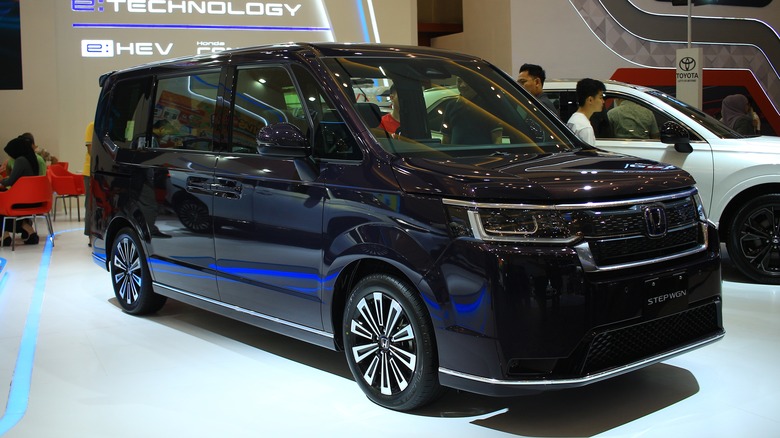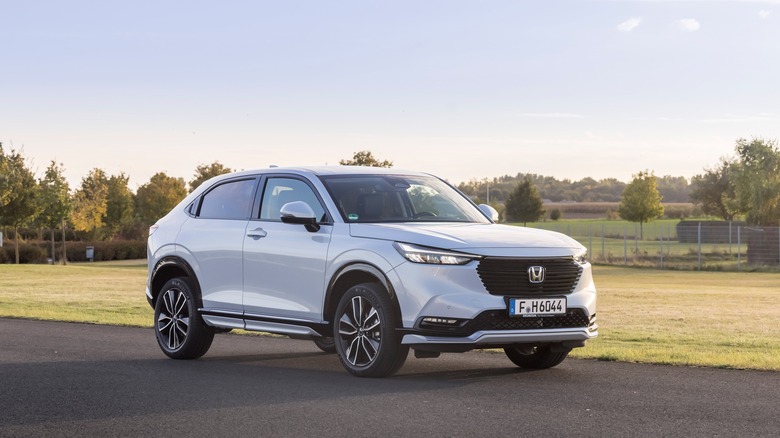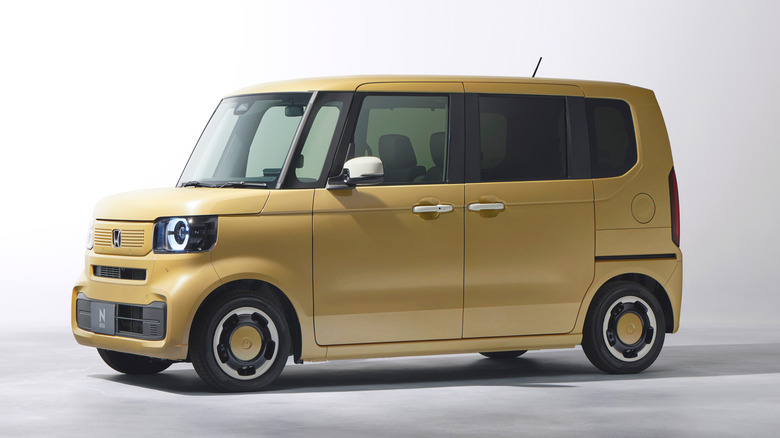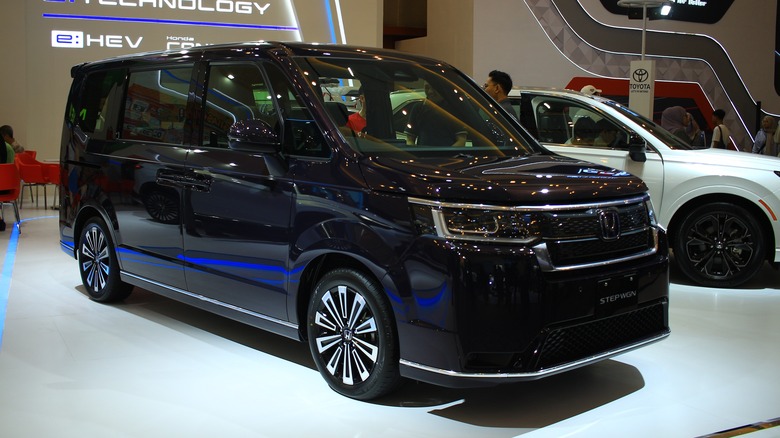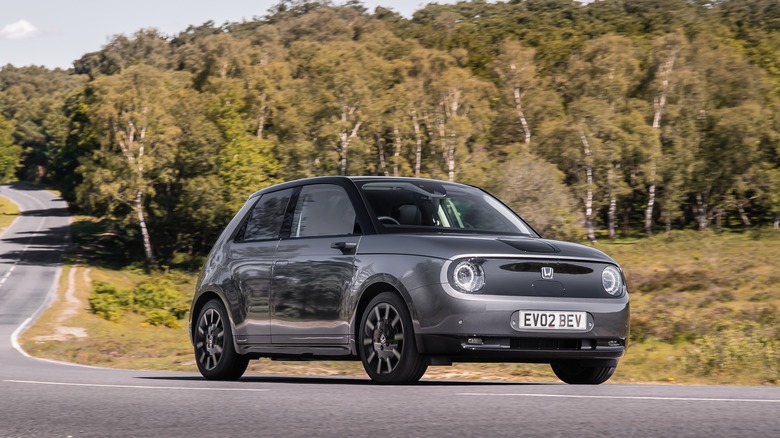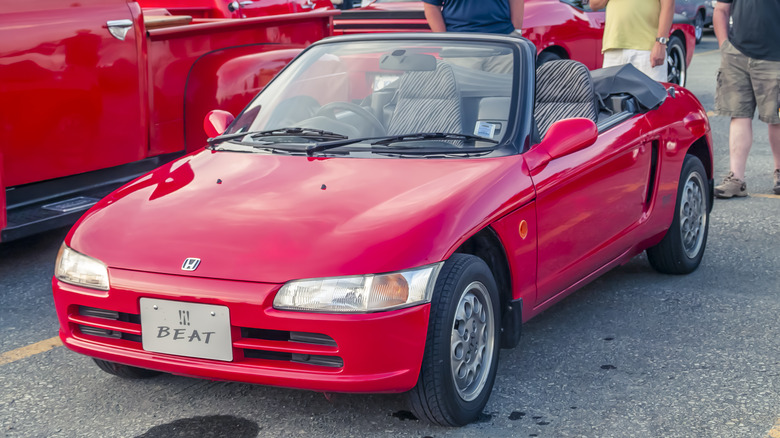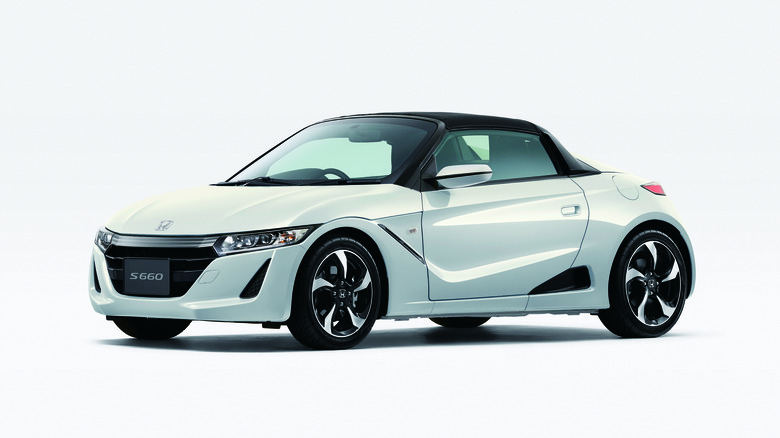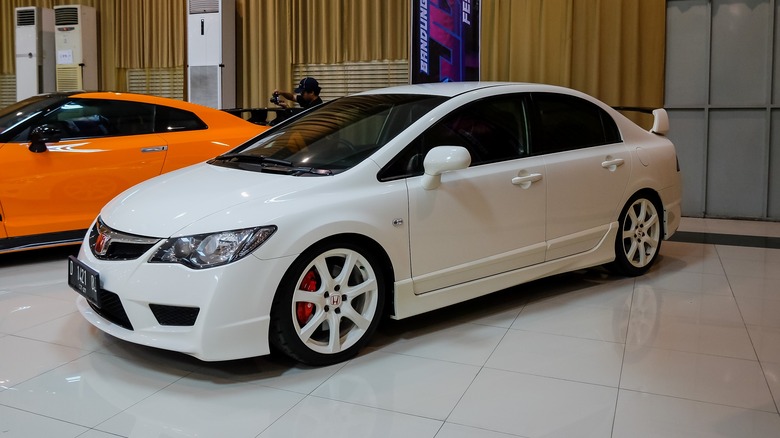8 Of The Coolest Honda Models You Can't Buy In America
Honda is one of the most established foreign automakers in North America. It was in the thick of it during the 1973 oil crisis, offering America and Canada less expensive, fuel-efficient cars that were the perfect remedy for the big, powerful, thirsty V8s that people were buying back then.
Today, Honda is still one of the most successful and celebrated automakers on the American continent, and virtually all of its models have proven very popular with American buyers. However, Honda is a Japanese automaker, and Japan is very different to North America, or any other market for that matter.
Most of Honda's vehicles offered in America are global models that everyone else gets too, but there are a few instances where Honda gatekeeps some really cool models for its home market, or other foreign markets in some cases. You can't, and in some cases couldn't, buy these cars in North America. That's really unfortunate, because some of these are really cool.
HR-V / Vezel
You're probably thinking "Wait, doesn't North America get an HR-V already?" Yes, it does, but the HR-V in North America is what the rest of the world calls the ZR-V. The HR-V that Honda sells in global markets, called the Vezel in Japan and HR-V everywhere else, is vastly different.
As well as being a little bit smaller, the rest-of-world HR-V has a touch of retro styling that makes it cooler. The way the roof tapers off into the rear end at an angle puts us in mind of old European compact cars like the Mk1 VW Golf and Fiat 127, and that's not a bad thing. It's also available in some fantastic colors.
The HR-V is designed primarily for the European and Japanese markets, which is why it should come as no surprise that it's available exclusively with hybrid power. Specifically, it features Honda's fascinating i-MMD hybrid powertrain, which "combines a petrol engine, two electric motors and a lithium-ion battery." The HR-V also spawned an electric version, bizarrely named the e:Ny1. The HR-V is definitely a looker, and it's a shame that North America doesn't get this version.
N-Box
You knew a kei car was coming, didn't you? As a quick refresher, kei cars in Japan have to comply with certain dimension regulations and engine size regulations, while offering tax benefits to potential buyers. The Honda N-Box is one of the most popular kei cars in Japan, and it's easy to see why.
Look how cute it is! The N-Box neatly falls into the kei minivan subcategory, and despite its diminutive length and width, it's enormously (perhaps hilariously) tall. Having a wheel at each corner means a deceptively large interior, kinda like a clown car. The N-Box can transport a family of five people with a surprising amount of comfort and space.
Power comes from — you guessed it — a 63 hp, 660cc engine that can also be optionally turbocharged. It distributes power to either the front wheels or all four wheels through a CVT automatic transmission. What Honda was able to do with the tiny dimensions of the N-Box is truly impressive, and it's further proof that often you don't need a massive vehicle to make the most of interior room and practicality. Hear that, pickup owners? For those who need pure storage space inside, there's also an electric N-Van.
Step WGN
Another one of Honda's most notable JDM-only models. While Honda's minivan duties are left to the Odyssey in North America, Japan gets another minivan option that's cheaper and easier on the wallet in terms of fuel costs. The Step WGN has been around in Japan for a very long time, and while it's definitely not a kei car, it follows a similar formula.
It's smaller than the Odyssey, but it makes great use of its space thanks to the super tall roofline. Like the Odyssey, the Step WGN can also seat up to eight people, though seven seaters are also available. Under the hood of the Step WGN is not a raucous, thirsty V6, but rather a much more humble four-cylinder engine, and as of recently, a hybrid has joined the lineup as well.
In Japan, a fully loaded Step WGN will set you back some 4 million yen, equivalent to around $27,000. Meanwhile, the Odyssey in North America starts at around $42,000. We're not sure why Honda doesn't take a page from European automakers' book and offer two different minivans for those who don't need the whole shebang, but maybe it should.
E
Honda's first globally available electric car was an irresistibly adorable retro hatchback that had little else to offer beside its cutesy styling. The E (technically spelled with a lowercase e) first went on sale in 2020, and it signified the arrival of Honda's electric era.
It made sense to focus this car for the European market, as small city EVs are a big deal there. The E had quite competitive in the local market in some ways, but it may not have been worth the money.
The E was very expensive to buy, easily surpassing a lot of Honda's normal lineup. A small electric motor, juiced by a 35.5 kWh battery pack, drove the front wheels and dispatched 150 hp to them, though a less powerful 132 hp version was also available. A battery pack that small resulted in a short range of about 130 miles. While the E did find a few homes in Europe, it wasn't a smash hit, and it's expected to be discontinued after 2024. Still, though, look how cute it is, and look at that interior!
Z
Honda loves single letter model names, it seems. In the world of Honda vehicles, Z can actually mean two different things. In the 70s, the Z was one of Honda's smallest vehicles — slotting below the Civic. In the 90s, the Z name was brought back for an adorable lifted kei car with retro styling.
The styling on the Honda Z was radical. The Z came standard with 4WD and raised suspension, which made it much more off-road capable than a lot of its kei car contemporaries. The engine was mounted in the middle of the car, kinda like the Toyota Previa, and it was a 660cc turbocharged unit kicking out 63 hp.
Thanks to its wheel-at-each-corner design, it also had four seats AND ample cargo space in the back. As if it couldn't possibly get cooler, you could spec your Z with a factory navigation system, very similar to that of Honda's much larger and much more luxurious models. Not enough room in the rear? No problem, you also had a frunk.
Beat
The phrase "holy trinity" gets tossed around a lot in the automotive world, mostly referring to the McLaren P1, LaFerrari, and Porsche 918. One automotive holy trinity that rarely gets talked about is the holy trinity of kei sports cars from the 90s. This is comprised of the Autozam AZ-1, the Suzuki Cappuccino, and the Honda Beat.
Like the other two, the Beat was a tiny sports car that fit the kei regulations, and it was also mid-engined. Power came from a rather quirky naturally-aspirated 660cc I3 that made 63 hp, and it could also rev to 9,000 RPM. This meant a lot of noise, but not a lot of speed, which was one of the main reasons why the Beat was such a blast to drive.
All of that was wrapped up in a tastefully designed body that's very easily recognizable today. The dialpad steel wheels are another one of the Beat's most recognizable design traits. Unfortunately, Honda never offered the Beat globally, though they are now legal to be imported to both the United States and Canada. The Beat is definitely one of the greatest definitions of the phrase "slow car fast."
S660
Honda didn't want to let the kei sports car just disappear from its lineup, so two decades after the last Beat rolled off the production line, a mid-engined Honda kei sports car returned in the form of the S660. While Honda still won't release a new S2000, the S660 was a valiant attempt to capture the spirit of the original Beat.
The teeny tiny S660 was named after the capacity of its engine, so there are no prizes for guessing how big it is. Like the Beat, it's also a three-cylinder, but the S660 also adds a turbocharger. The redline is only 7,700 RPM, which is not as high as the Beat, but still impressive for a modern turbocharged engine.
All of the fire-breathing 63 horses reach the rear wheels through a six-speed manual transmission. The chassis is somewhat stiff, but the S660 is just a featherweight at 1,829 pounds. The S660 recently went out of production, but with the arrival of a new Miata and some new Toyota sports cars looming, it would be the perfect time to bring it back.
Civic Type R (FD2)
The EP3 Honda Civic Type R left a huge mark on the enthusiast car world. With 200 hp from a screaming four-cylinder, a true manual transmission, and fully independent suspension made it an absolute blast. Its successor, the FN2 Civic Type R, had some pretty big shoes to fill. Due to several cost-cutting measures and more weight, it really didn't.
Or at least, it didn't in most global markets. Over in Japan, Honda gave buyers another way to have a Civic Type R: the FD2 sedan. Based on the eighth-gen Civic sedan, the FD2 Type R featured very similar styling upgrades, including the aggressive body kit and giant spoiler on the back, but the FD2 sweetened the Type R deal significantly.
Unlike the FN2, the FD2 actually had more power to support its extra weight. Honda extracted 220 hp from the K20, compared to 195 on the FN2. More importantly, the drivetrain was far better, as the FD2 kept the multilink suspension in the rear, and threw in a standard-fit helical LSD on the front axle for good measure. In terms of the driving experience, basically nothing compares. It's also a pretty brisk machine, topping out at 149 mph and taking 6.3 seconds to reach 60 mph.
